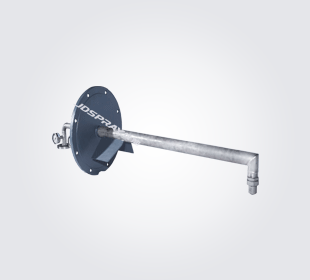 Spray Systems Solution Provider
Spray Systems Solution Provider
 Spray Systems Solution Provider
Spray Systems Solution Provider
 Home >
Business Area >
Disposal of Incineration Flue Gas in Hazardous Waste Industry >
SCR catalysts applied in flue gas denitrification can be divided into high-temperature catalysts and
Home >
Business Area >
Disposal of Incineration Flue Gas in Hazardous Waste Industry >
SCR catalysts applied in flue gas denitrification can be divided into high-temperature catalysts and





Pursuing excellence, perfection, and perfection
4001 123 933
Free hotline Monday to Friday 8:30-17:00
Contact Now 2021-04-21
2021-04-21  View
ViewMainstream denitrification processes: The more mainstream processes are divided into SCR and SNCR. These two processes have little difference in reaction temperature compared to SNCR, except for the use of catalysts in SCR. However, from the perspectives of construction and operation costs, the investment in SCR is at least several times, or even more than 10 times, that of SNCR.
SCR process introduction: Full name selective catalytic reduction technology (SCR) is currently the most mature flue gas denitrification technology. It is a post furnace denitrification method, first completed in commercial operation by Japan in the late 1960s to 1970s. It uses reducing agents (NH3, urea) to selectively react with NOx under metal catalysts to generate N2 and H2O, rather than being oxidized by O2, hence the name "selectivity".
The popular SCR processes in the world are mainly divided into two types: ammonia SCR and urea SCR. Both of these methods utilize the reduction function of ammonia on NOx, which, under the action of a catalyst, reduces NOx (mainly NO) to N2 and water that have little impact on the atmosphere, with the reducing agent being NH3.
The catalysts used in SCR mostly use TiO2 as the carrier, with V2O5, V2O5-WO3, or V2O5-MoO3 as the active ingredient, and are made into three types: honeycomb, plate, or corrugated. SCR catalysts used in flue gas denitrification can be divided into high-temperature catalysts (345 ℃~590 ℃), medium temperature catalysts (260 ℃~380 ℃), and low-temperature catalysts (80 ℃~300 ℃). Different catalysts have different suitable reaction temperatures. The phase transition of chemical agent materials leads to the degradation of catalyst activity. Most domestic and foreign SCR systems use high temperatures, with a reaction temperature range of 315 ℃ to 400 ℃.
If the reaction temperature is too low, the activity of the catalyst will decrease, leading to a decrease in denitrification efficiency. Moreover, if the catalyst continues to operate at low temperatures, it will cause permanent damage to the catalyst. If the reaction temperature is too high, NH3 is easily oxidized, the amount of NOx generated increases, and it can also cause a phase transition of the catalyst material, leading to a degradation of the catalyst's activity. Most domestic and foreign SCR systems use high temperatures, with a reaction temperature range of 315 ℃ to 400 ℃.
Introduction to SNCR process: full name Selective Non catalytic Reduction Technology (SNCR)
Selective non catalytic reduction is a method of reducing NOx within the temperature range of 850-1100 ℃ without the use of a catalyst. The most commonly used drugs are ammonia and urea.
Generally speaking, the SNCR denitrification efficiency can reach 25% to 40% for large coal-fired units and 80% for small units. Due to the significant influence of boiler structural dimensions, low nitrogen combustion technology is often used as a supplementary treatment method for this method. Its low engineering cost, simple layout, and small footprint are suitable for the renovation of old factories, while new factories can be used in conjunction with boiler design.
Shanghai Jiadi Spray System Co., Ltd. relies on high technology and combines years of rich experience in metallurgy, power, non-ferrous metals, cement and other related fields. By introducing advanced foreign processes and key technologies, the spray products developed are widely used in industries such as steel, thermal power, waste incineration, cement, petrochemicals, papermaking, printing, agriculture, fire protection, food, medicine, etc., covering cooling, cleaning, fire prevention, humidification, lubrication, spraying, etc Dust removal, gas regulation and other fields. If you have any requirements for SNCR denitrification system, please contact us!